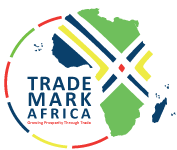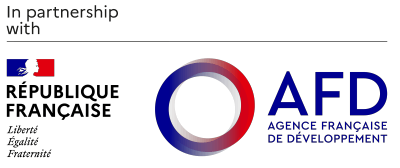Mombasa-Kampala-Kigali Highway
It’s 1,200 km from the Kenyan port of Mombasa to the Ugandan capital, Kampala and another 525 to the capital of Rwanda, Kigali. But with a few strokes of the politicians’ pens and some clicks on a mouse, that distance just got dramatically shorter.
“It used to take 18 days or more for one of our trucks to get here from Mombasa,” said Kassim Omar, Chairman of the Uganda Clearing Industry and Forwarding Association (UCIFA). “Now the same journey takes four days, sometimes even three.”
The reduction is due to the decision at a Northern Corridor infrastructure summit by the Presidents of Kenya, Rwanda and Uganda to speed rapidly growing freight along their key trade route and the implementation of a variety of hi-tech systems that have slashed paperwork and time.
The combination has stripped away a lot of the bureaucratic red tape that snarled the free flow of trade in the East African Community and contributed to some of the highest transport costs in the world, accounting for up to 40% of the price of goods to consumers.
In October 2013, Presidents Yoweri Museveni of Uganda, Paul Kagame of Rwanda and Uhuru Kenyatta of Kenya agreed to implement a Single Customs Territory (SCT) between them as members of the East African Community. Tanzania and Burundi, say they followed suit at the Summit in November 2013.
At a stroke, the agreement removed multiple weighbridge, police and customs checks along the Mombasa-Kampala-Kigali route and introduced computerised clearance and electronic tracking and other innovations that have overturned many of the hurdles to free trade or Non Tariff Barriers (NTBs) that the Northern Corridor was infamous for.
“It costs $400 a day to keep a truck on the road. Just do the mathematics. If the journey from Mombasa to Kigali used to take 21 days and now takes six, that is a saving of $6,000 per truck. And if you own a fleet, just think of what you are saving,” says Theodore Murenzi, Secretary-General of Rwanda’s Long Distance Truck Drivers’ Union.
The political decision, founded in a desire to strip away the port and road congestion slowing business in East Africa, one of the world’s fastest-growing economic regions, was underpinned by a range of technologies supported by TradeMark Africa (TMA).
Chief among these is ASYCUDA-World (the Automated System for Customs Data), a computerised web-based system that allows the online submission of customs declarations and paperless customs forms. It was developed by the United Nations Conference on Trade and Development (UNCTAD) and has been adopted by the Ugandan and Rwandan Revenue Authorities. Kenya has its own system, which is being upgraded by TradeMark Africa (TMA) and will integrate with it.
Another cutting-edge technology is an Electronic Cargo Tracking System (ECTS) that allows the authorities to trace the route a truck takes – eliminating the risk that it might divert and offload its cargo to avoid paying import and other taxes.
This works by attaching an electronic transponder to the cargo that beams out to central tracking stations and is being piloted on some cargoes, notably fuel.
Allied to this is the Authorised Economic Operator (AEO) system, which licences companies with good records of tax and customs compliance to make electronic customs declarations before arrival, get priority treatment if a cargo is selected for inspection, choose where that inspection will be and get exemption from withholding tax.
“TradeMark Africa (TMA) has been working with the URA and other agencies on these systems because increased trade means increased prosperity and cutting transport costs is vital, especially in landlocked countries such as Uganda,” says Allen Asiimwe, TradeMark Africa (TMA) Country Director, Uganda.
Joseph Mwangala, Project Manager at the Uganda Revenue Authority, beams with enthusiasm about the efficiencies ASYCUDA- World has brought since it was rolled out to 17 customs stations covering 98% of customs transactions and revenues.
“Before everything was done on paper. If you had 64 trucks bringing in one million litres of fuel, which meant 64 declarations you had to fill in. And it used to take 32 officers to clear those 64 trucks. Think of the savings on manpower, not to mention paper,” he said.
ASYCUDA- World and ECTS have helped fuel importers accelerate the pace of deliveries and crack down smuggled fuel that used to “disappear” along the border, he says.
With the piloting of clearance for bulk fuel products using the SCT system in February 2014, figures show that imports of fuel rose to around 120 million litres from 108 million in February 2013 with a 32% increase in taxes paid to the URA of 84.3 million Ugandan shillings (roughly $2 million).
Some trucks in transit across Uganda which are not yet under the ECTS scheme are escorted by the army in convoys to make sure that their goods are not illegally offloaded en route and sold without proper tax payments.
“So convoys have to wait for their escorts if a soldier decided he wants to stop for a bottle of beer, the whole convoy had to stop, and time is money,” said Mwangala.
But this practice too could become redundant if ECTS and other systems are applied on all transit freight.
Moses Sabiti, a Programme Manager with TradeMark Africa (TMA) Uganda, used to be a Principal Revenue Officer with the URA.
“My every working day started with the arrival of a huge, huge basket of customs papers from the border of trucks wanting to cross, and I had to parcel them out in the office to organise the clearance. The basket weighed a tonne! The time spent was unbelievable. What is happening today is real progress for the transport industry and the country.”















